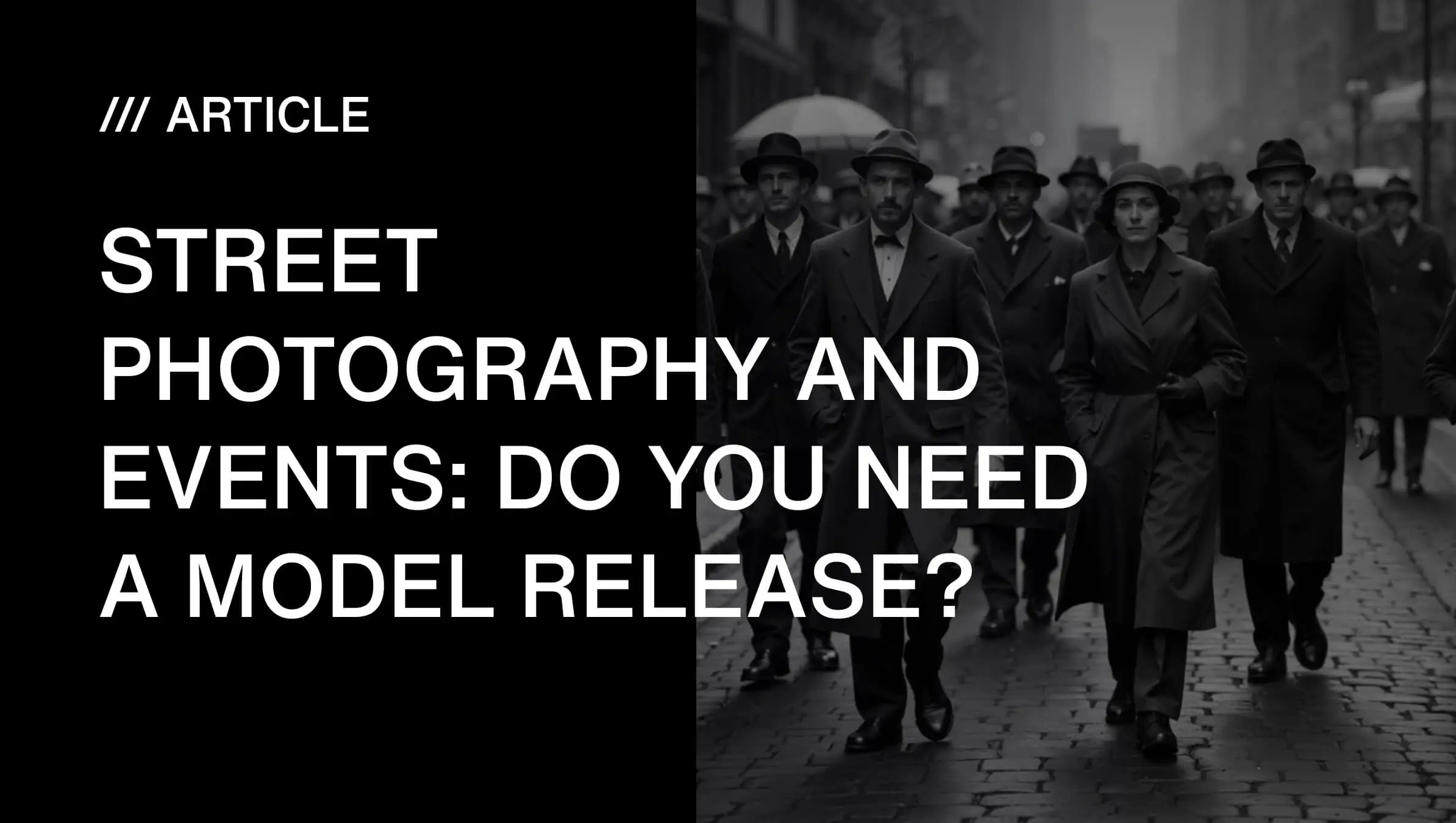Introduction
I’ll never forget this one shoot in a cramped studio - cables everywhere like snakes waiting to trip me, one softbox leaning because the stand had lost a knob. The client’s pacing like we’re about to miss a train, and I slide a release toward the model. She’s fixing her lipstick, barely glances, signs it upside down, and flicks it back at me as if she was signing for a food delivery.
And I thought, ah, easy. But experience has smacked me around enough to know - easy doesn’t always mean safe. If this thing went south, trust me, she wouldn’t be the one getting frantic calls. That heat lands squarely on me.
What Is a Model Release Contract (and Why Photographers Need It)
Straight Talk
To cut the jargon - it’s just a contract that says, “Go ahead, use my face, here’s the deal.” That’s it. But don’t mistake simple for small. That piece of paper is the fence between smooth sailing and your lawyer blowing up your phone at midnight.
Why It Matters
I had a mate - a seriously talented fashion shooter - skip this once. Licensed an image, thought he was golden. Then the model spots herself plastered across a campaign she never okayed. She went legal, he went broke, and I ended up buying him beers just to calm him down. What should’ve been lens money turned into lawyer money.
This is exactly why photographers need model releases - without them, you’re exposed legally and financially. Professional groups like the ASMP (American Society of Media Photographers) and PPA (Professional Photographers of America) actually recommend getting releases signed before any commercial use, no exceptions. Lesson? No release, no peace.
Why Models Don’t Read Model Release Forms
Blind Trust
I once had a model chuckle, “You’re the pro, you know what you’re doing.” Cute line, but it chilled me. Blind trust is a shortcut to disaster.
Set Chaos
Picture this: assistants tripping over sandbags, strobes overheating, client whispering, “Can you make her look less smiley?” while you’re juggling lenses. In that storm, contracts look like background clutter. Models just sign to keep the circus moving.
Legal Jargon = White Noise
I told a model once, “This clause means forever.” She laughed, “Cool, forever young then!” and signed. Thought I was joking. I wasn’t.
Adrenaline Buzz
First shoots are wild. Some models are so hyped, glowing like stars under the lights, that paperwork feels like the boring credits after a movie.
Autopilot
The pros? They’ve signed so many they could do it with coffee in one hand and pen in the other. And honestly, sometimes they do.
The Fallout of Not Reading a Model Release Contract
- • Loss of Control over Image Rights: A mate’s face once ended up shilling for a dodgy energy drink. Didn’t earn a cent from it.
- • Reputation Risks for Models: I saw a model’s photo slapped on a political ad she hated. She called it “career suicide.”
- • Perpetual Rights = Forever: I once joked with a model, “Imagine I still use this shot when you’re eighty, knitting on your balcony.” She laughed—then froze when I told her that’s literally what ‘perpetuity’ means.
Our Responsibility as Photographers: Legal Protection and Trust
I used to be lazy - slide the form across and pray nobody asked. These days, I slow down, even if the client’s sighing like we’re wasting daylight.
- • Spell It Out: I point at the key bits - “This one’s usage, this one’s time limits, this bit’s your copy.”
- • Encourage Questions: Had a model ask me once if her shots might end up on Tinder. Odd question, but hey - that was her worry. This is where you need to know how to explain model releases to models in plain language.
- • Build Trust: A model told me later, “You’re the first photographer who explained this properly.” Guess who got the callback for her next big job?
How I Hand Over Model Releases Professionally (Photography Guide)
Over time, I’ve built my own little model release photography guide - a workflow that makes the process smoother for everyone.
- • Timing: Early, before makeup cakes and patience runs thin.
- • Language: If I can’t explain it over a cup of tea, it’s too complicated.
- • Backup Plans: My iPad died mid-sign once. Brutal. Now I carry paper copies folded in my Pelican case.
- • Always Share Copies: I send a PDF after the shoot. It’s a five-minute task that saves five months of grief.
Ethics: Don’t Be That Photographer
Every industry has its sharks. Photographers sneaking in tiny-print clauses to trap models into signing away everything forever. One bloke pulled that stunt and got blacklisted so hard I haven’t heard his name since. Word travels. This scene’s smaller than you think - burn bridges once, and you’re done.
Practical Model Release Tips for Photographers
- • Keep contracts short. Less paper = more chance someone actually reads it.
- • Use examples: “This could end up on a bus ad, a website, or a magazine spread.” Suddenly the jargon makes sense.
- • Always follow up: I shoot the release back with a thank-you note. Models love it, clients respect it, and future-me sleeps better.
Conclusion
Look, releases aren’t glamorous. Nobody brags about them. But they’re the scaffolding holding everything up. Models skim because they trust us, they’re distracted, or they just don’t get the fine print. That doesn’t give us an excuse.
I’ve botched it before, I’ve seen mates botch it, and I’ve watched careers wobble from one sloppy signature. Now I explain, I carry backups, I share copies. It’s not rocket science - it’s respect.
So the next time you’re on set, don’t just chase the perfect light - chase the perfect paperwork too. Your future self (and your reputation) will thank you.





